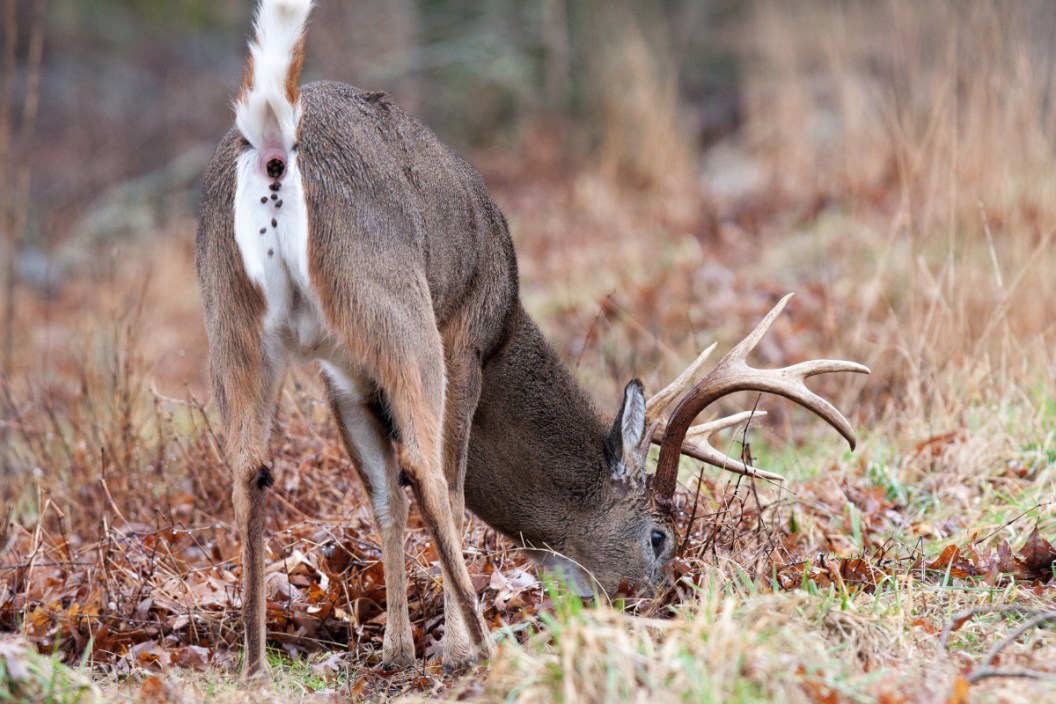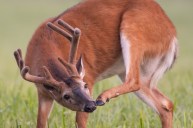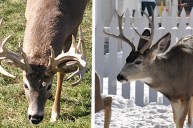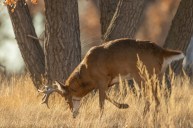Deer droppings are probably the easiest form of sign a hunter can find in the woods. Even most novice hunters can quickly find a fresh pile of deer pellets that are a clear indicator an animal was there. While we run into deer poop quite frequently in the woods, not many hunters stop to think about what the deer scat is telling them about the animal that produced them. The truth is that these small pellets can be subtle clues to deer movement that can be a huge difference maker in your success or failure this season. You don't need to be a biologist to learn a lot from them either. It may seem disgusting to analyze poop in this manner, but when you start really examining the subject, it's quite fascinating and you'll learn a lot about their habits once you know more about how deer defecate.
Today we'll cover everything deer hunters need to know deer dung. We'll explain how to properly identify their droppings, how to determine if it is fresh, why it is shaped and colored the way it is. We will bust a few myths deer hunters have been circulating about droppings for years. We'll also explain how to utilize small clues from the excrement to improve your odds of connecting with that big buck this deer hunting season.
What Does Deer Poop Look Like?

Justin Smith via Getty Images
Despite the size of these animals, deer feces are not long and tubular like you might expect. Instead, deer produce small, oval-shaped pellets. These pellets are usually dark brown to a shiny black when fresh. They are also very smooth. Sometimes one of the ends will be noticeably tapered slightly. The reason deer produce pellets in this manner is because their sphincter acts in a type of rhythmic motion, opening and closing repeatedly.
Like many ungulates, deer are ruminants. That means they have a four-part stomach and part of the process of digestion involves returning a portion of food from their stomach to their mouth to be chewed again. Most people know this as cud chewing. Bacteria in the animal's stomach helps aid in the digestion of the plant material, which is finely ground down during the process.
The digestive system of a deer is rather efficient. In fact, it can be rather difficult to determine the type of food source the animal has been utilizing from examining it. Although some hunters believer firmer poop indicates more of a woodsy browse. Stuff like twigs, branches, acorns, etc. Deer poop that is mushier might indicate more agricultural type food sources. Things like corn, alfalfa, and the various types of forage often planted in modern food plots. If you really pick through the droppings with a stick, you might be able to identify a few items that will give you a better clue of what they are feeding on.
Deer poo bears a close resemblance to rabbit droppings, which are also left in pellet form. The best way to tell the difference between the two is to look at the shape and texture of the feces. Deer poop usually has a much smoother surface than rabbit poop, which is rough. Rabbit droppings are also much rounder than those left by a deer. Deer poop is also usually much darker than that of a rabbit, which is usually a light brown coloration.
Can You Tell Buck and Doe Droppings Apart?
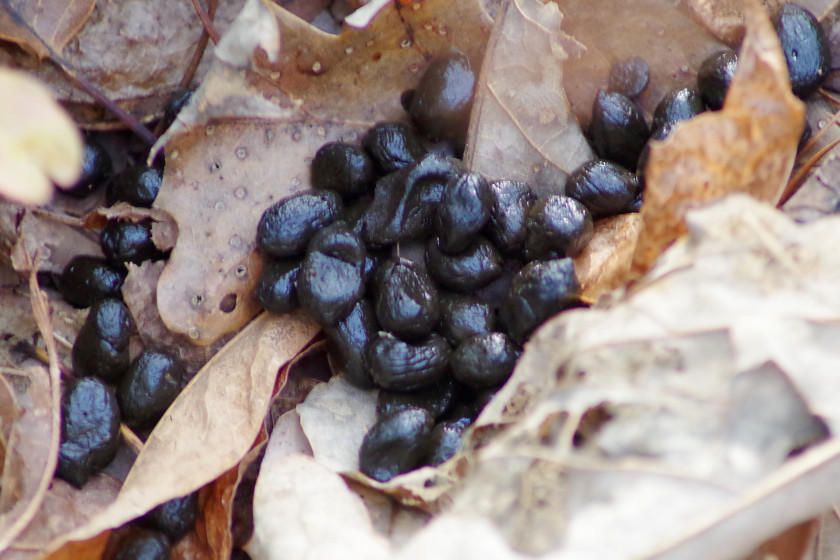
Angel WC via Getty Images
At some point, someone insisted you could tell the sex of a deer from examining the dropping. We're not sure where this one originated, but we're guessing it's something old school hunter, probably during the frontier days of America, who came up with the idea. These days, most biologists seem to believe that's only partially true. Mainly because the idea that doe droppings are shaped differently or are smaller than a buck's droppings is false. Buckmasters notes a study in Georgia indicated most hunters couldn't differentiate deer sex based on those merits. However, other scientific studies have indicated that bucks produce far more droppings than does. Most studies cite the average number of pellets in a white-tailed deer poop pile at being around 70-75. So, if you really want to know, take a stick, and count them! If you are finding large piles with more than that, it's probably a good place to setup a treestand.
How Often Do Deer Poop?
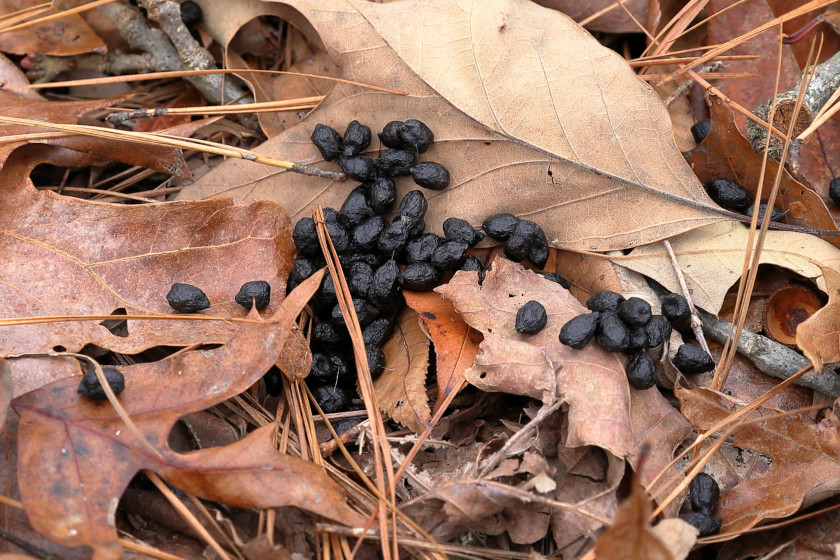
CRobertson via Getty Images
Anyone who has ever field dressed a deer has likely found their animal was quite "full" just before it died. It's usually not a coincidence, even though plenty of hunters have likely shot a deer before it had to go. However, these animals need to defecate far more often than most hunters realize. In fact, scientific studies have indicated they might defecate 12 to 15 times a day! In the summer months, when food is readily available, they may double that each day. No wonder some deer keep right on feeding as they're doing their business, they don't have the time otherwise!
Because deer poop so frequently, biologists have been able to do deer population surveys by going out and counting the piles. The National Deer Association notes this is something anyone can do if you have the time and determination. It involves going out and recording the number of pellet groups you find in an area. Most studies will only count a pile with 10 or more pellets in it. These types of surveys are a bit of a tedious process, but by doing some simple math, biologists can determine a good estimate on the number of deer per square mile.
Other Things Hunters Should Know About Deer Poop
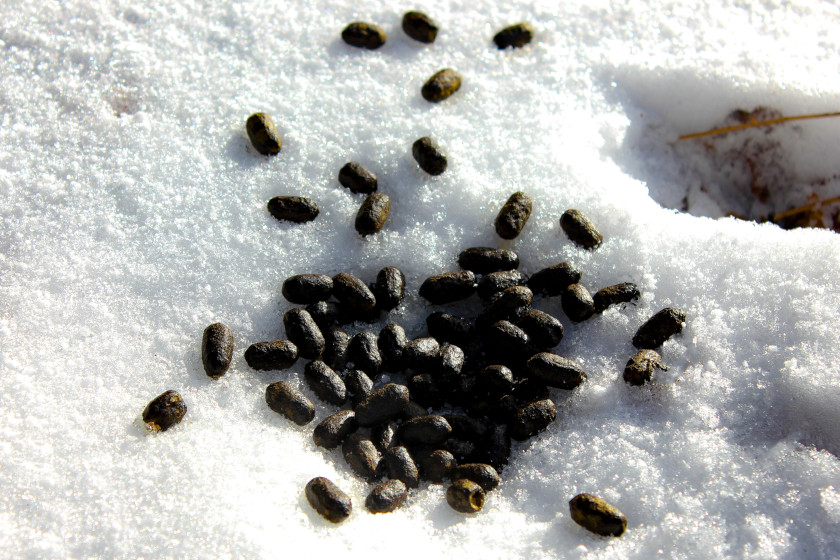
lauraag via Getty Images
We have heard of hunters who like to purposely step in piles of deer droppings as a form of natural cover scent for their boots. It's not exactly our thing, but we would caution against this to some degree. While there isn't a lot of evidence to support deer transmitting diseases to humans, there is a small chance of infecting other deer. The prions that cause chronic wasting disease (CWD) have been shown to spread through deer poop. So, it helps to exercise a little caution if you hunt in several different areas.
Other than that, every hunter should keep an eye out for dropping all the time. If you come across a pile of deer poop in the forest and it still has a wet, shiny appearance, that's a great sign. It means there is likely a deer extremely close. That's why you should always be on the lookout for fresh droppings. It makes no sense to set up in a spot if everything you're seeing is old, dried, and cracked. Deer can shift the areas they hang out at the drop of a hat, but there is usually no hiding where they've been recently. The only real exception is with fawns. A doe will usually make sure her offspring are defecating far away from she has them stashed away. That's for the safety of the young deer as it prevents predators from being lured in by the smell of the droppings. There have also been recorded cases of does eating the droppings of their fawns to help with this.
Most key bedding areas and feeding areas cannot be hidden though. If you find an area with piles of poop everywhere, it's likely to be one of those two. The bedding areas are usually a bit more concentrated. In some areas, you might come across deer droppings that are more clumped than normal, this is usually an indicator of a bedding area. If you do see an obvious bed, droppings in the bed itself indicate the deer spent an extensive amount of time there. This can help you plan stand locations and times to sit.
Deer droppings may get overlooked a bit when compared to tracks, scrapes, and rubs. However, they are one of the best indicators out there that you've found the right spot to hunt. Pay a little more attention to the poop you find in the woods this season. You might be surprised what you can learn from it.
For more outdoor content from Travis Smola, be sure to follow him on Twitter and Instagram For original videos, check out his Geocaching and Outdoors with Travis YouTube channels.
READ MORE: CAN YOU ID THESE ANIMALS BY THEIR POOP?
